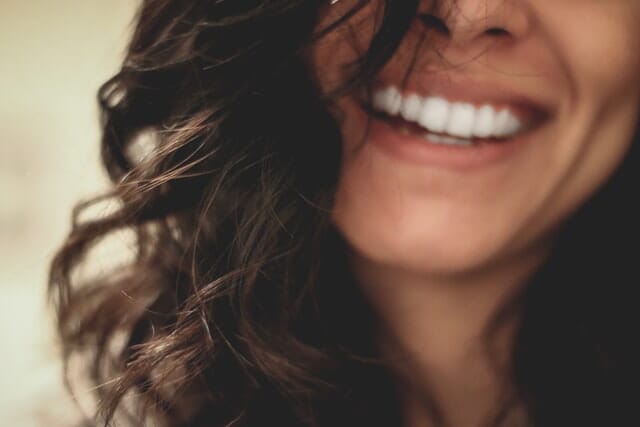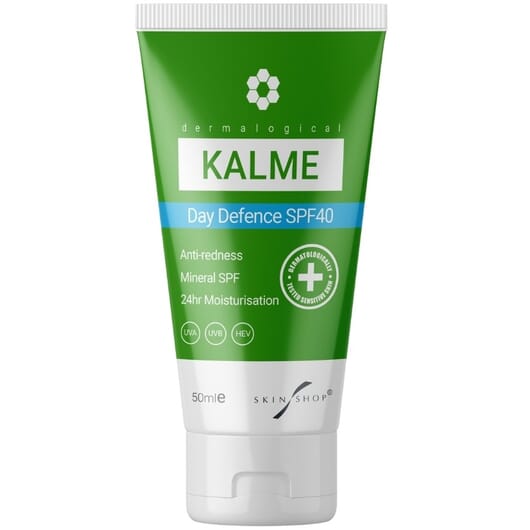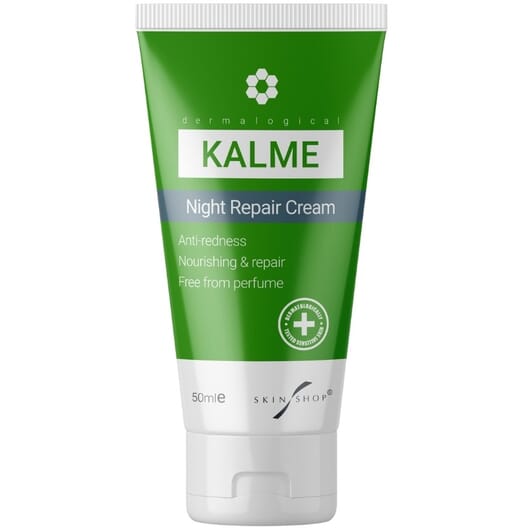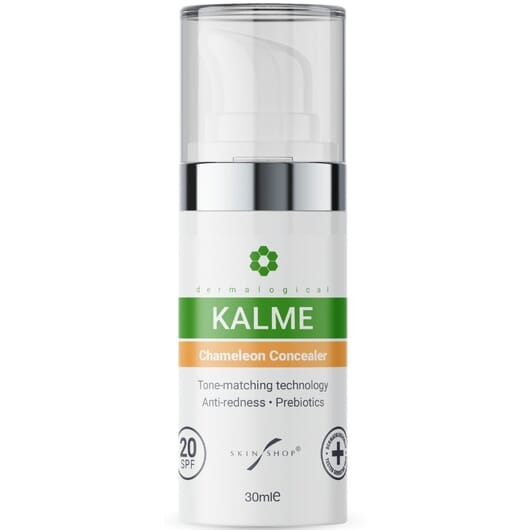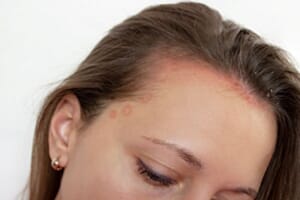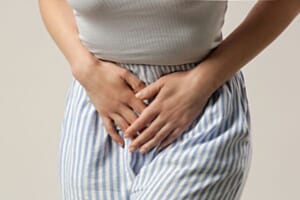Although rosacea is one of the most common skin conditions, it also is one of the most misdiagnosed and there is no single cure that gets rid of rosacea. Knowing more about rosacea, the different types and the triggers can help with the selection of products and lifestyle factors to help manage the skin condition. In this blog post we have provided you with everything you need to know about how to treat rosacea - looking at types, triggers and treatment.
Here's all you need to know about how to treat Rosacea: types, triggers & treatment
What is Rosacea?
Rosacea is a chronic skin condition affecting the central parts of the face, mostly the cheeks, nose, the forehead (between the eyes) and the chin. It causes blood vessels in the face to enlarge, therefore giving a flushed appearance to the upper cheeks and nose seras. Rosacea often has several symptoms which can all be present, or some people may only have only one or two.
Symptoms of rosacea include: frequent deep flushing, persistent inflammation, itchiness, small white papules and pustules and dry patches. Other symptoms may include, burning or stinging of the skin, redness or itchiness in the eyes.
What are the different types of rosacea?
1. Erythematotelangiectatic Rosacea
Erythematotelangiectatic Rosacea is a subtype of rosacea and is characterised by frequent flushing which can last longer than 10 minutes. The redness will be strongest in the central parts of the face, but may also involve the peripheral portion of the face as well as extra facial areas like the ears, scalp, neck, chest.
2. Papulopustular Rosacea
Papulopustular rosacea is the most classic presentation of rosacea. Redness appears in the central portion of the face, along with persistent or intermittent flare ups, accompanied by small papules and pinpoint pustules. The sides of the face and other areas are usually not affected. The constant inflammation may lead to chronic oedema (swelling) and phymatous changes (bulging of the pores make a bumpy surface to the skin), which occur more commonly in men than in women.
3. Phymatous Rosacea
Phymatous rosacea is characterised by marked skin thickening and irregular skin surface, most commonly involving the nose, chin forehead, ears and eyelids. The papules and pustules that accompany this type of rosacea are often large, and may involve nasal lesions. This type of rosacea frequently affects people with a history of adolescent acne.
4. Ocular Rosacea
Ocular rosacea usually develops later, after any of the other three subtypes of rosacea are already established. Symptoms like burning or stinging, itching, light sensitivity, and a foreign body sensation in the eyes, are all common with this type of rosacea.
What triggers a rosacea flareup?
There are many different triggers for rosacea including stress, sun exposure, alcohol and foods. The most common triggers for rosacea in women is skincare products and cosmetics- especially toners and perfumed soaps. However for men, the biggest cause for a flare up are shaving creams and lotions.
How to Avoid Rosacea Flare Ups?
- Wearing a daily SPF that’s suitable for skin prone to rosacea and keeping your face covered by a hat or shade when out in direct sun can drastically help reduce flare ups. Our Kalme day defence cream + is a moisturiser that contains SPF 30 and dermatologically tested ingredients that help to combat the symptoms of rosacea.
- Any sudden temperature changes to the skin, such as washing with warm or cold water, can cause rosacea to flare up, as the temperature change increases circulation to the surface of the skin. Water is also a caustic substance, making it fairly abrasive to very sensitive skin. We recommend using Skin Shop’s Klame water-free cleanser. This is an effective cream that cleanses all the impurities on your skin, without the use of water.
- Use cosmetic products that are specifically for skin prone to rosacea. Our range of Kalme products are for people who suffer from rosacea and red skin.
- Avoid using any type of perfumed soap, body wash and face wash, as the perfume chemical can react and trigger rosacea.
- When possible, avoid alcohol, caffeine and spicy food consumption. All of these can cause a rosacea flare up.
How to Treat Rosacea Effectively
There is no one-stop cure for rosacea as it’s a very complex skin condition. Effective treatments normally involve a combination of several products (either prescription or alternative) that work for the individual, along with relevant lifestyle changes.
Medication for Rosacea
Typically, most people with rosacea will be prescribed antibiotics either topical or oral. Results are varied and often repeated flare ups occur once the antibiotics courses are finished. Prescriptions may also include topical creams or gels that help restrict blood flow to the skin that contain either brimonidine or oxymetazoline. Topical creams for addressing the pustules may also be prescribed and normally contain azelaic acid.
Natural Treatments for Rosacea
Capers
Caper bud extract is known to control and reduce the symptoms of rosacea, as capers are rich in flavonoid compounds, rutin and quercetin. Both these compounds are potent sources of antioxidants. Antioxidants prevent free radical damage, the main cause of inflammation in skin. Rutin is proved to be helpful in treating strained or dilated blood vessels.
Skin Shop’s Kalme Day Defence contains a patented caper extract called Derma Sensitive, which has been proven in clinical trials to reduce skin redness and sensitivity by up to 70%.
Agave
An extract from Mexican Agave, the plant uniquely used to make tequila, has been shown to help reduce symptoms of rosacea. Agave extract is a potent skin prebiotic that helps increase levels of good skin flora and helps repair damaged skin microbiomes. Agave extract is also more moisturising than Hyaluronic Acid, and so prevents the extreme dryness associated with rosacea that can lead to more microbiome damage and worse flare ups.
Skin Shop Is Here To Help
If you suffer from rosacea or red skin, visit our website for more information and advice about this skin condition.



